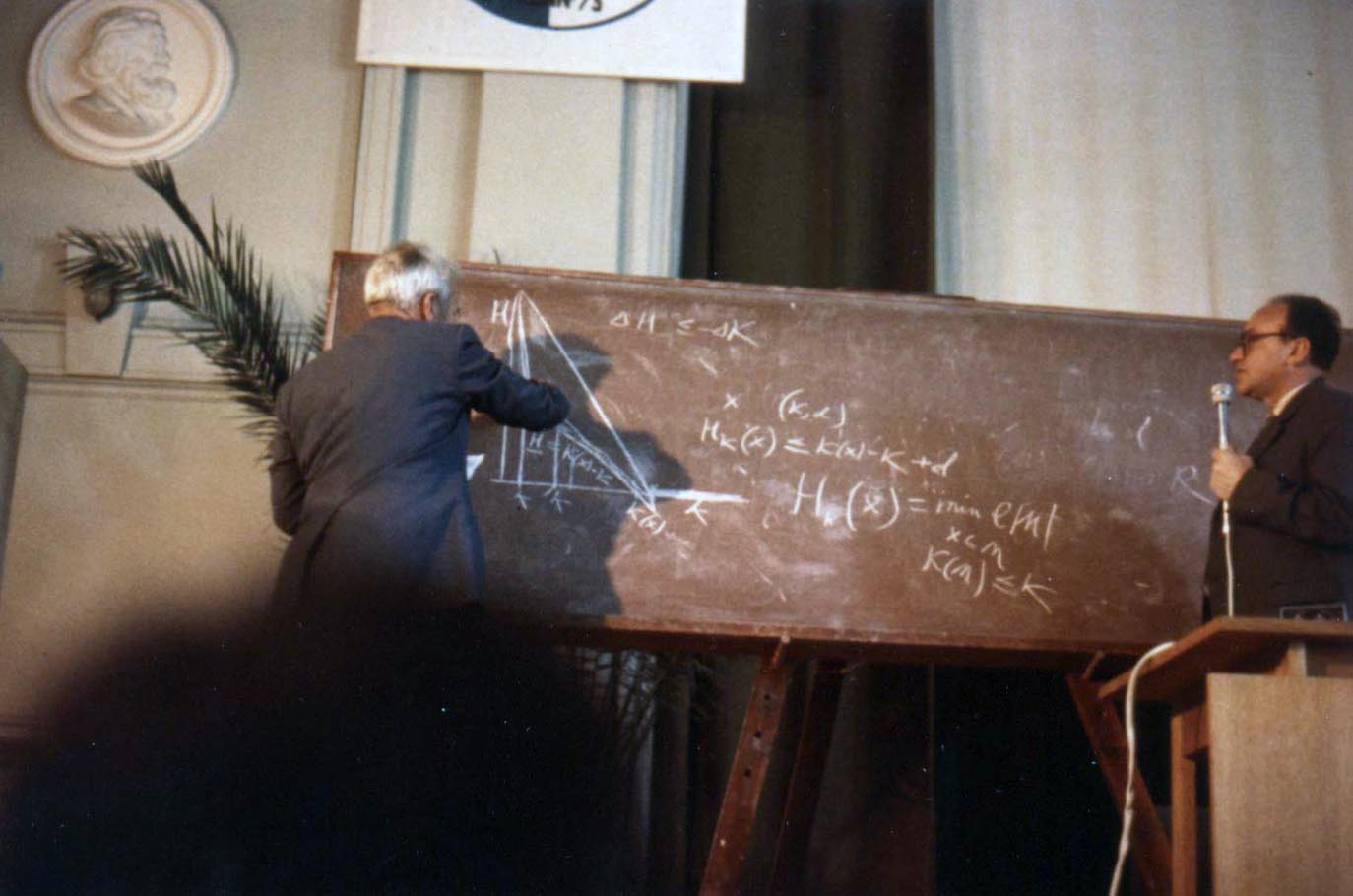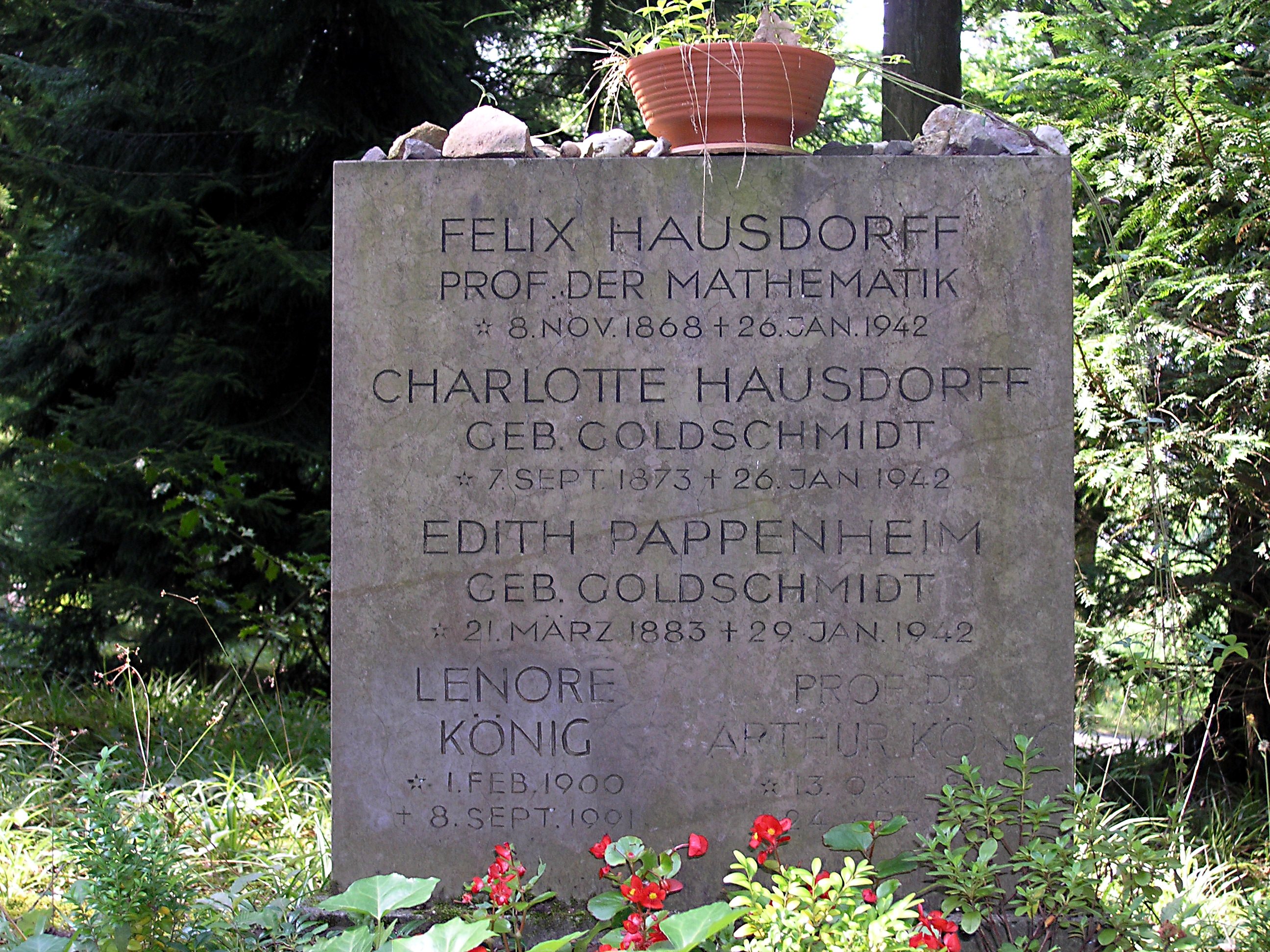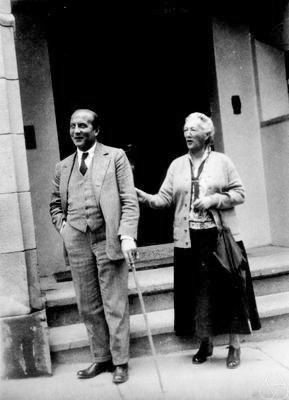|
Pavel Samuilovich Urysohn
Pavel Samuilovich Urysohn (in Russian: ; 3 February, 1898 – 17 August, 1924) was a Soviet mathematician who is best known for his contributions in dimension theory, and for developing Urysohn's metrization theorem and Urysohn's lemma, both of which are fundamental results in topology. He also constructed what is now called the Urysohn universal space and his name is also commemorated in the terms Fréchet–Urysohn space, Menger–Urysohn dimension and Urysohn integral equation. He and Pavel Alexandrov formulated the modern definition of compactness in 1923. Biography Pavel Urysohn was born in Odesa in 1898. His mother died when he was little, and he entered the care of his father and sister. The family moved to Moscow in 1912, where Urysohn completed his secondary education. While still at school, he worked at Shanyavsky University on an experimental project on X-ray radiation and was supervised by Petr Lazarev. At that time, Urysohn’s interests lay predominantly ... [...More Info...] [...Related Items...] OR: [Wikipedia] [Google] [Baidu] |
Odesa
Odesa, also spelled Odessa, is the third most populous List of cities in Ukraine, city and List of hromadas of Ukraine, municipality in Ukraine and a major seaport and transport hub located in the south-west of the country, on the northwestern shore of the Black Sea. The city is also the administrative centre of the Odesa Raion and Odesa Oblast, as well as a multiethnic cultural centre. As of January 2021, Odesa's population was approximately On 25 January 2023, its Historic Centre of Odesa, historic city centre was declared a World Heritage Site and added to the List of World Heritage in Danger by the UNESCO World Heritage Committee in recognition of its multiculturality and 19th-century urban planning. The declaration was made in response to the Odesa strikes (2022–present), bombing of Odesa during the Russian invasion of Ukraine, which has damaged or destroyed buildings across the city. In classical antiquity a large Greek settlement existed at its location no later than t ... [...More Info...] [...Related Items...] OR: [Wikipedia] [Google] [Baidu] |
Urysohn Integral Equation
Pavel Samuilovich Urysohn (in Russian: ; 3 February, 1898 – 17 August, 1924) was a Soviet mathematician who is best known for his contributions in dimension theory, and for developing Urysohn's metrization theorem and Urysohn's lemma, both of which are fundamental results in topology. He also constructed what is now called the Urysohn universal space and his name is also commemorated in the terms Fréchet–Urysohn space, Menger–Urysohn dimension and Urysohn integral equation. He and Pavel Alexandrov formulated the modern definition of compactness in 1923. Biography Pavel Urysohn was born in Odesa in 1898. His mother died when he was little, and he entered the care of his father and sister. The family moved to Moscow in 1912, where Urysohn completed his secondary education. While still at school, he worked at Shanyavsky University on an experimental project on X-ray radiation and was supervised by Petr Lazarev. At that time, Urysohn’s interests lay predominantly in phy ... [...More Info...] [...Related Items...] OR: [Wikipedia] [Google] [Baidu] |
Lazar Lyusternik
Lazar Aronovich Lyusternik (also Lusternik, Lusternick, Ljusternik; ; 31 December 1899 – 22 July 1981) was a Soviet mathematician. He is famous for his work in topology and differential geometry, to which he applied the variational principle. Using the theory he introduced, together with Lev Schnirelmann, he proved the theorem of the three geodesics, a conjecture by Henri Poincaré that every convex body in 3-dimensions has at least three simple closed geodesics. The ellipsoid with distinct but nearly equal axis is the critical case with exactly three closed geodesics. The ''Lusternik–Schnirelmann theory'', as it is called now, is based on the previous work by Poincaré, David Birkhoff, and Marston Morse. It has led to numerous advances in differential geometry and topology. For this work Lyusternik received the Stalin Prize in 1946. In addition to serving as a professor of mathematics at Moscow State University, Lyusternik also worked at the Steklov Mathematical Institute ... [...More Info...] [...Related Items...] OR: [Wikipedia] [Google] [Baidu] |
Andrey Kolmogorov
Andrey Nikolaevich Kolmogorov ( rus, Андре́й Никола́евич Колмого́ров, p=ɐnˈdrʲej nʲɪkɐˈlajɪvʲɪtɕ kəlmɐˈɡorəf, a=Ru-Andrey Nikolaevich Kolmogorov.ogg, 25 April 1903 – 20 October 1987) was a Soviet mathematician who played a central role in the creation of modern probability theory. He also contributed to the mathematics of topology, intuitionistic logic, turbulence, classical mechanics, algorithmic information theory and Analysis of algorithms, computational complexity. Biography Early life Andrey Kolmogorov was born in Tambov, about 500 kilometers southeast of Moscow, in 1903. His unmarried mother, Maria Yakovlevna Kolmogorova, died giving birth to him. Andrey was raised by two of his aunts in Tunoshna (near Yaroslavl) at the estate of his grandfather, a well-to-do Russian nobility, nobleman. Little is known about Andrey's father. He was supposedly named Nikolai Matveyevich Katayev and had been an Agronomy, agronomist. Katayev ha ... [...More Info...] [...Related Items...] OR: [Wikipedia] [Google] [Baidu] |
Vadim Yefremovich
Vadim Arsenyevich Yefremovich (or Efremovich) (; 16 October 1903 – 1 May 1989) was a Soviet mathematician. Yefremovich was a member of the Moscow Topological School and specialized in the geometric aspects of general topology. He introduced the notion of proximity spaces at the First International Topological Conference in Moscow in 1935. He was imprisoned from 1937 to 1944, and did not publish on proximity spaces until 1951, at which point the theory was developed rapidly by Efremovič and associates. Yefremovich also introduced the notion of "volume invariants" for "equimorphisms" (that is, uniformly bicontinuous) on metric spaces. These have proven to be very important in the study of manifolds and hyperbolic geometry In mathematics, hyperbolic geometry (also called Lobachevskian geometry or János Bolyai, Bolyai–Nikolai Lobachevsky, Lobachevskian geometry) is a non-Euclidean geometry. The parallel postulate of Euclidean geometry is replaced with: :For a .... Refere ... [...More Info...] [...Related Items...] OR: [Wikipedia] [Google] [Baidu] |
France
France, officially the French Republic, is a country located primarily in Western Europe. Overseas France, Its overseas regions and territories include French Guiana in South America, Saint Pierre and Miquelon in the Atlantic Ocean#North Atlantic, North Atlantic, the French West Indies, and List of islands of France, many islands in Oceania and the Indian Ocean, giving it Exclusive economic zone of France, one of the largest discontiguous exclusive economic zones in the world. Metropolitan France shares borders with Belgium and Luxembourg to the north; Germany to the northeast; Switzerland to the east; Italy and Monaco to the southeast; Andorra and Spain to the south; and a maritime border with the United Kingdom to the northwest. Its metropolitan area extends from the Rhine to the Atlantic Ocean and from the Mediterranean Sea to the English Channel and the North Sea. Its Regions of France, eighteen integral regions—five of which are overseas—span a combined area of and hav ... [...More Info...] [...Related Items...] OR: [Wikipedia] [Google] [Baidu] |
Brittany
Brittany ( ) is a peninsula, historical country and cultural area in the north-west of modern France, covering the western part of what was known as Armorica in Roman Gaul. It became an Kingdom of Brittany, independent kingdom and then a Duchy of Brittany, duchy before being Union of Brittany and France, united with the Kingdom of France in 1532 as a provinces of France, province governed as a separate nation under the crown. Brittany is the traditional homeland of the Breton people and is one of the six Celtic nations, retaining Culture of Brittany, a distinct cultural identity that reflects History of Brittany, its history. Brittany has also been referred to as Little Britain (as opposed to Great Britain, with which it shares an etymology). It is bordered by the English Channel to the north, Normandy to the northeast, eastern Pays de la Loire to the southeast, the Bay of Biscay to the south, and the Celtic Sea and the Atlantic Ocean to the west. Its land area is 34,023 ... [...More Info...] [...Related Items...] OR: [Wikipedia] [Google] [Baidu] |
Felix Hausdorff
Felix Hausdorff ( , ; November 8, 1868 – January 26, 1942) was a German mathematician, pseudonym Paul Mongré (''à mogré' (Fr.) = "according to my taste"), who is considered to be one of the founders of modern topology and who contributed significantly to set theory, descriptive set theory, measure theory, and functional analysis. Hausdorff was Jewish, and life became difficult for him and his family after the '' Kristallnacht'' of 1938. The next year he initiated efforts to emigrate to the United States, but was unable to make arrangements to receive a research fellowship. On 26 January 1942, Hausdorff, along with his wife and his sister-in-law, died by suicide by taking an overdose of veronal, rather than comply with German orders to move to the Endenich camp, and there suffer the likely implications, about which he held no illusions. Life Childhood and youth Hausdorff's father, the Jewish merchant Louis Hausdorff (1843–1896), moved with his young family to Leipzig in t ... [...More Info...] [...Related Items...] OR: [Wikipedia] [Google] [Baidu] |
David Hilbert
David Hilbert (; ; 23 January 1862 – 14 February 1943) was a German mathematician and philosopher of mathematics and one of the most influential mathematicians of his time. Hilbert discovered and developed a broad range of fundamental ideas including invariant theory, the calculus of variations, commutative algebra, algebraic number theory, the foundations of geometry, spectral theory of operators and its application to integral equations, mathematical physics, and the foundations of mathematics (particularly proof theory). He adopted and defended Georg Cantor's set theory and transfinite numbers. In 1900, he presented a collection of problems that set a course for mathematical research of the 20th century. Hilbert and his students contributed to establishing rigor and developed important tools used in modern mathematical physics. He was a cofounder of proof theory and mathematical logic. Life Early life and education Hilbert, the first of two children and only son of O ... [...More Info...] [...Related Items...] OR: [Wikipedia] [Google] [Baidu] |
Dmitri Egorov
Dmitri Fyodorovich Egorov (; December 22, 1869 – September 10, 1931) was a Russian and Soviet mathematician known for contributions to the areas of differential geometry and mathematical analysis. He was President of the Moscow Mathematical Society (1923–1930). Life Egorov held spiritual beliefs to be of great importance, and openly defended the Church against Marxist supporters after the Russian Revolution. He was elected president of the Moscow Mathematical Society in 1921, and became director of the Institute for Mechanics and Mathematics at Moscow State University in 1923. He also edited the journal ''Matematicheskii Sbornik'' of the Moscow Mathematical Society. However, because of Egorov's stance against the repression of the Russian Orthodox Church, he was dismissed from the Institute in 1929 and publicly rebuked. In 1930 he was arrested and imprisoned as a "religious sectarian", and soon after was expelled from the Moscow Mathematical Society. Upon imprisonment, Egoro ... [...More Info...] [...Related Items...] OR: [Wikipedia] [Google] [Baidu] |
Nikolai Luzin
Nikolai Nikolayevich Luzin (also spelled Lusin; rus, Никола́й Никола́евич Лу́зин, p=nʲɪkɐˈlaj nʲɪkɐˈlajɪvʲɪtɕ ˈluzʲɪn, a=Ru-Nikilai Nikilayevich Luzin.ogg; 9 December 1883 – 28 February 1950) was a Soviet and Russian mathematician known for his work in descriptive set theory and aspects of mathematical analysis with strong connections to point-set topology. He was the eponym of Luzitania, a loose group of young Moscow mathematicians of the first half of the 1920s. They adopted his set-theoretic orientation, and went on to apply it in other areas of mathematics. Life He started studying mathematics in 1901 at Moscow State University, where his advisor was Dmitri Egorov. He graduated in 1905. Luzin underwent great personal turmoil in the years 1905 and 1906, when his materialistic worldview had collapsed and he found himself close to suicide. In 1906 he wrote to Pavel Florensky, a former fellow mathematics student who was now studying ... [...More Info...] [...Related Items...] OR: [Wikipedia] [Google] [Baidu] |
Petr Lazarev
Petr Petrovich Lazarev (; 14 April 1878 – 24 April 1942) was a biophysicist and a founder of the Soviet Institute of Physics and Biophysics (now Lebedev Physical Institute). He also founded the journal ''Uspekhi fizicheskikh nauk'' (later '' Physics-Uspekhi''). Early life Lazarev was born in Moscow where his father worked as a civil engineer. After studies at a Moscow Gymnasium, he graduated from Moscow University in 1901 with a medical degree. After passing the examination to become a doctor of medicine in 1902 he worked at an ear clinic. He then became interested in mathematics and physics and passed the university examination in 1903 after studying the subjects entirely on his own. Career Lazarev's early research was on hearing and he noted that auditory sensations could be amplified by coordinated visual stimulation. He later studied other phenomena such as synesthesia and the effect of singing on vision. He began to collaborate with P.N. Lebedev from 1903 and in 191 ... [...More Info...] [...Related Items...] OR: [Wikipedia] [Google] [Baidu] |




